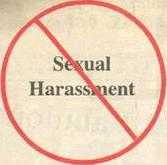By Jim Cline and Mark Anderson

In Gregg v. City of Houston, a Texas police officer prevailed on a motion to dismiss his claims for harassment and retaliation after he was sexually harassed by a female coworker for several years, and then ostracized by coworkers after he reported the harassment. The court found that Officer Michael Gregg met each of the required elements to proceed to trial on his Title VII hostile work environment claim and his retaliation claim.
Officer Gregg worked in the same unit as Officer Michelle McCormick. For several years, Officer McCormick made lewd sexual comments and innuendos to Officer Gregg and others. She stopped by Officer Gregg’s desk frequently and made inappropriate and unwelcome comments. Officer McCormick also enlarged a photo of Officer Gregg, so the picture featured his crotch and then showed the photo on her cell phone to a group of officers while making “ooh” and “ah” sounds.
After Officer Gregg reported the harassment to management, the department conducted an internal investigation. The investigation sustained Officer Gregg’s claims and the department issued “no contact” orders between Gregg and McCormick. Officer Gregg then filed a charge with the EEOC. Thereafter, his coworkers labeled him a “snitch” and refused to work with him. He was eventually transferred to a less desirable shift.
The Houston Police Department argued that Officer McCormick was an “equal opportunity offender” because she made lewd sexual comments to both men and women. Therefore, the Department argued, Officer Gregg could not prove that the harassment was because of his sex, a required element of a sexual harassment claim. The Department further argued that Officer Gregg’s claims fell outside the statute of limitations because only the “crotch photo” incident fell within the limitations period. It also argued that because Officer Gregg had a change in managers during the time he experienced the harassment there could be no “continuing violation.” That is, the separate events could not be linked together to form one viable claim.
Officer Greg argued that the harassment was part of a series of events and that they should not be considered as separate acts. He argued that because at least one incident, the “crotch photo,” fell within the limitations period, then all the related acts could be considered by a jury. He argued that management knew of the harassment because managers sent several emails out to staff stating that sexual harassment would not be tolerated in the workplace, because he had reported the harassment internally, and because management offered to transfer him after his report of harassment.
The court found that Officer Gregg’s harassment claims were all part of the same, related events, which occurred over a period of years. Because the “crotch photo” event occurred within the limitations period, then all the related events could be considered by the jury. The court rejected the Department’s claim that a change in managers served to absolve it of liability for Officer McCormick’s harassment. The court found that management knew of the harassment and failed to take appropriate measures to stop it, and that Officer Gregg’s transfer to a different department with a less desirable shift was an “adverse employment action.” Finally, the court found that Officer Gregg was able to establish a retaliation claim because evidence showed that management knew his coworkers refused to work with him after his report of harassment.
This case presents a fact pattern where a male employee was sexually harassed by a female employee. It shows that the same legal requirements apply to each case. It further illustrates that when the harassment is done by a coworker, as opposed to a manager, the victim employee must make management aware of the harassment. Once aware, management has a legal obligation to take prompt remedial action to stop the harassment. Finally, this case shows that only one event in a series of related events need fall within the limitations period to form a hostile work environment claim.
**Visit our Premium Website for more information on Civil Rights of Public Safety Employees and Right to Be Free of Unlawful Discrimination.**



